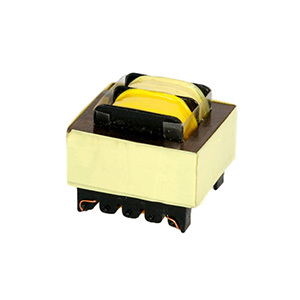NEWS
Understanding Common-Mode Inductors: Essential Components for Effective Filtering
Release time:
Nov 05,2024
Common-mode inductors are specialized inductive components designed to suppress electromagnetic interference (EMI) in electronic circuits. They are particularly effective in filtering out common-mode noise, which is noise that appears equally on both the positive and negative lines of a differential signal. This type of noise can originate from various sources, including power supplies, switching devices, and external electromagnetic fields. By effectively managing this noise, common-mode inductors help to maintain the integrity of the signals being transmitted, thereby ensuring high performance in electronic devices.
These inductors typically consist of two or more coils wound around a magnetic core, which allows them to create a magnetic field that opposes the flow of unwanted common-mode currents. When common-mode noise is present, the inductor provides a high impedance path, effectively blocking the noise while allowing the desired differential signals to pass through with minimal attenuation. This makes them invaluable in applications such as telecommunications, automotive electronics, and industrial automation, where signal clarity is paramount.
The construction of a common-mode inductor is vital to its performance. Factors such as the number of turns, core material, and component size all influence the inductor's inductance value and its ability to filter out noise. Selecting the appropriate common-mode inductor for a specific application involves considering these parameters, as well as the operating frequency range and the expected level of interference.
In addition to their role in noise suppression, common-mode inductors can also improve the overall efficiency of power conversion systems. By minimizing common-mode noise, these inductors can enhance the performance of power supplies, DC-DC converters, and other devices, contributing to lower electromagnetic emissions and compliance with regulatory standards.
As the demand for high-performance electronic devices continues to grow, the importance of common-mode inductors in ensuring signal integrity and reducing EMI cannot be overstated. Engineers and designers must remain informed about the latest developments in inductor technology and filtering techniques to select the most suitable components for their specific applications.
In conclusion, common-mode inductors are essential components in the arsenal of electronic designers and engineers. Their ability to effectively filter out common-mode noise not only improves signal integrity but also enhances the overall performance of electronic systems. Understanding their functionality and application will aid in making informed decisions when designing circuits that demand high reliability and minimal interference.
These inductors typically consist of two or more coils wound around a magnetic core, which allows them to create a magnetic field that opposes the flow of unwanted common-mode currents. When common-mode noise is present, the inductor provides a high impedance path, effectively blocking the noise while allowing the desired differential signals to pass through with minimal attenuation. This makes them invaluable in applications such as telecommunications, automotive electronics, and industrial automation, where signal clarity is paramount.
The construction of a common-mode inductor is vital to its performance. Factors such as the number of turns, core material, and component size all influence the inductor's inductance value and its ability to filter out noise. Selecting the appropriate common-mode inductor for a specific application involves considering these parameters, as well as the operating frequency range and the expected level of interference.
In addition to their role in noise suppression, common-mode inductors can also improve the overall efficiency of power conversion systems. By minimizing common-mode noise, these inductors can enhance the performance of power supplies, DC-DC converters, and other devices, contributing to lower electromagnetic emissions and compliance with regulatory standards.
As the demand for high-performance electronic devices continues to grow, the importance of common-mode inductors in ensuring signal integrity and reducing EMI cannot be overstated. Engineers and designers must remain informed about the latest developments in inductor technology and filtering techniques to select the most suitable components for their specific applications.
In conclusion, common-mode inductors are essential components in the arsenal of electronic designers and engineers. Their ability to effectively filter out common-mode noise not only improves signal integrity but also enhances the overall performance of electronic systems. Understanding their functionality and application will aid in making informed decisions when designing circuits that demand high reliability and minimal interference.


















